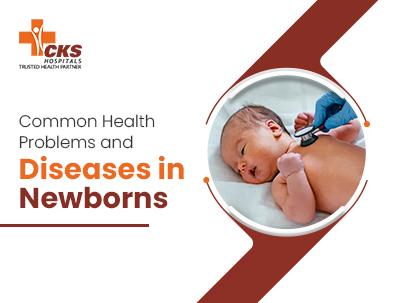Bone Cancer: – Meaning
Bone cancer occurs when an abnormal mass of tissue or a tumor forms in a bone. There are many types of tumors, but some are malignant. A malignant tumor grows rapidly and spreads to other places in the body. Bone cancer affects the skeletal system and destroys tissue. Distant organs, like the lungs, can also be affected by the disease.
There are various types of bone cancer, some affecting primarily children, and others affecting mostly adults. A common method of treating bone cancer is surgery, although radiation therapy and chemotherapy may also be used. The treatment depends on the type of bone cancer a patient has.
Symptoms of Bone Cancer
Here are the early sign & symptoms of bone cancer-
- Pain in the bones
- An unintended weight loss
- Fractures due to weakened bones
- Tenderness and swelling near the affected area
- Feeling fatigued
- Pain in the bones
- An unintended weight loss
- Fractures due to weakened bones
- Tenderness and swelling near the affected area
- Feeling fatigued

Types of Bone Cancer
Bone cancer can be classified into several types. The bone cancers belong to the group of tumors known as sarcomas. The soft tissues like muscles and nerves, as well as the bones, can be affected by sarcomas. It exhibits a variety of diverse properties at the molecular and cellular levels. The following are the types of bone cancer
Osteosarcoma
One of the most common types of bone cancer is osteosarcoma. Children and young adults are most likely to develop this form of bone cancer in the legs or arms. There are rare circumstances in which osteosarcoma develops outside of bone tissue (extraskeletal osteosarcoma).
Chondrosarcoma
Chondrosarcoma is a tumor that develops in cartilage cells and is the second most prevalent form of the disease. The risk of developing this type of bone cancer increases with age, although it rarely affects anyone under the age of 20.
Fibrosarcoma
It develops in the soft tissue surrounding bones, and in particular in the tendons, ligaments, fat, and muscles. This type of bone cancer appears primarily in older adults, usually in the arms, jaw, and legs.
Ewing’s sarcoma
As with most types of cancer, the Ewing tumor, or Ewing’s sarcoma, typically begins in the bones, though it can also develop in other organs and tissues. Children and teenagers are most commonly affected by Ewing tumors, but adults over 30 are rarely affected.
Chordoma
In Chordoma, the bones of the spine and the skull base are affected. Tumors like this grow slowly and have a low risk of spreading. However, if not completely removed during surgery, they can return to the original site. Generally, bone cancers of this kind occur in adults 30 or older, particularly in men. Chordoma can also spread to the lungs, lymph nodes, or liver in the body.
Giant cell tumors
Giant cell tumors of the bone can be malignant or benign, but the malignant form is less common. A cancerous tumor usually develops in the knee, arm, or leg bones of young and middle-aged adults and is very rarely found elsewhere on the body.
Bone Cancer Risk Factors
There are several factors that increase the risk of developing bone cancer. The following are the causes of developing bone cancer
- Genetic factors- There are certain diseases that you can inherit, such as Li-Fraumeni syndrome and retinoblastoma, which can put you at a higher risk for bone cancer.
- Treatment for other cancers- A bone tumor is more likely to appear in people who have undergone stem cell transplantation radiation treatment or certain chemotherapy drugs to treat other cancers.
- Paget’s disease of bone- Paget’s disease is a condition that causes the bones to break down and then grow back abnormally. This benign bone condition may also increase your risk of developing bone cancer.
Diagnosis of bone cancer
There are many tests that doctors use to find or diagnose bone cancer. Additionally, they perform tests to determine if cancer has spread outside the area where it originated. The following are the tests that can be performed by doctors to diagnose bone cancer in patients

- Bone scan-Radioactive tracers are used during a bone scan to look inside bones. The stage of bone sarcoma may be determined by a bone scan. Healthy bones appear lighter to the camera, while injury-causing areas, such as cancerous cells, appear darker.
- Blood Tests- Bone sarcoma may be detected through laboratory blood tests. Alkaline phosphatase and lactate dehydrogenase levels may be higher in people with osteosarcoma or Ewing sarcoma.
- MRI (Magnetic resonance imaging)- MRIs produce detailed images of the body using magnetic fields rather than x-rays. The size of the tumor can be measured with MRI. By using MRIs, orthopedic oncologists can plan the best surgical approach for cancer patients.
- CT scan (Computed tomography)-The size of the tumor can be determined by a CT scan. In a CT scan, x-rays are taken from various angles to view the inside of the body. Through the use of a computer, these pictures are combined into a 3-dimensional picture that shows any tumors or abnormalities.
- Biopsy-During a biopsy, a small portion of tissue is removed & put under a microscope for examination. Depending on where the cancer is located, a needle biopsy or an incisional biopsy may be performed.
- PET scan (Positron emission tomography)-During the procedure, a technician injects radioactive glucose (sugar) into your vein. After that, a scanner spots cancer cells that several factors increase and consume greater amounts of glucose than regular cells.
Bone Cancer Treatment In Jaipur
There is a wide range of treatment options available for bone cancer in Jaipur, depending on the type, stage, patient’s health, and preferences. The following treatments are available for the treatment of bone cancer in Jaipur.
Surgery
Through surgical treatment, bone cancer can be treated. Doctors who specialize in treating bone sarcoma with surgery are surgical oncologists and orthopedic oncologists. During surgery, the tumor and the unhealthy tissue surrounding it are removed. A bone sarcoma that has metastasized to other parts of the body can also be treated with surgery.
Therapies
Bone Cancer can be treated with therapies. Different types of therapies can be performed to treat different types of bone cancer. The following are the therapies your doctor may suggest for the treatment of bone cancer.
- Chemotherapy
- Immunotherapy
- Target therapy
- Radiation therapy







